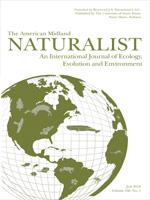Since elk (Cervus elaphus) were extirpated from eastern North America, they have been successfully reintroduced in numerous eastern states and one Canadian province. In forest-dominated areas, reintroductions of large ungulates can create potential for conflict with humans if elk select agriculture or private property to meet nutritional needs. We determined the seasonal diet selection of recently reintroduced elk in the Missouri Ozarks by comparing diet composition with availability of 12 forage classes. We measured diet composition using microhistological analysis of feces collected from June 2011 through February 2013, and we determined forage availability through vegetation sampling. Elk selected grains and cool-season grasses over all other forage classes across all seasons and years except during summer 2012 and fall 2012. Legumes were the most highly consumed forage class for all seasons and years. Native forbs were selected during summer and fall 2012 but were not selected during 2011. Approximately half (44.6%) of the annual elk diet was comprised of species cultivated in managed forage openings. Clover (Trifolium spp.), alfalfa (Medicago sativa), and common lespedeza (Kummerowia spp.) were the most prevalent species in the elk diet, indicating the importance of managed forage openings for the Missouri elk herd. However, during a drought in 2012 elk diet shifted to native species, likely because elk became more selective of forages that met their nutritional needs. In forest-dominated landscapes, where conflict with humans on privately owned land is possible, we recommend the creation of forage openings composed of cool-season grasses and legumes to increase forage availability for elk. We recommend management for natural open lands that promote native forbs and grasses given they provide a valuable food source when environmental conditions affect availability, nutritional quality, or palatability of cultivated forages and because cultivated forage openings are not always an option in some areas or over long time periods.
How to translate text using browser tools
1 July 2018
Diet Composition and Selection of Recently Reintroduced Elk in Missouri
Trenton N. Smith,
Barbara J. Keller,
M. Colter Chitwood,
Lonnie P. Hansen,
Joshua J. Millspaugh
ACCESS THE FULL ARTICLE
It is not available for individual sale.
This article is only available to subscribers.
It is not available for individual sale.
It is not available for individual sale.

The American Midland Naturalist
Vol. 180 • No. 1
July 2018
Vol. 180 • No. 1
July 2018




